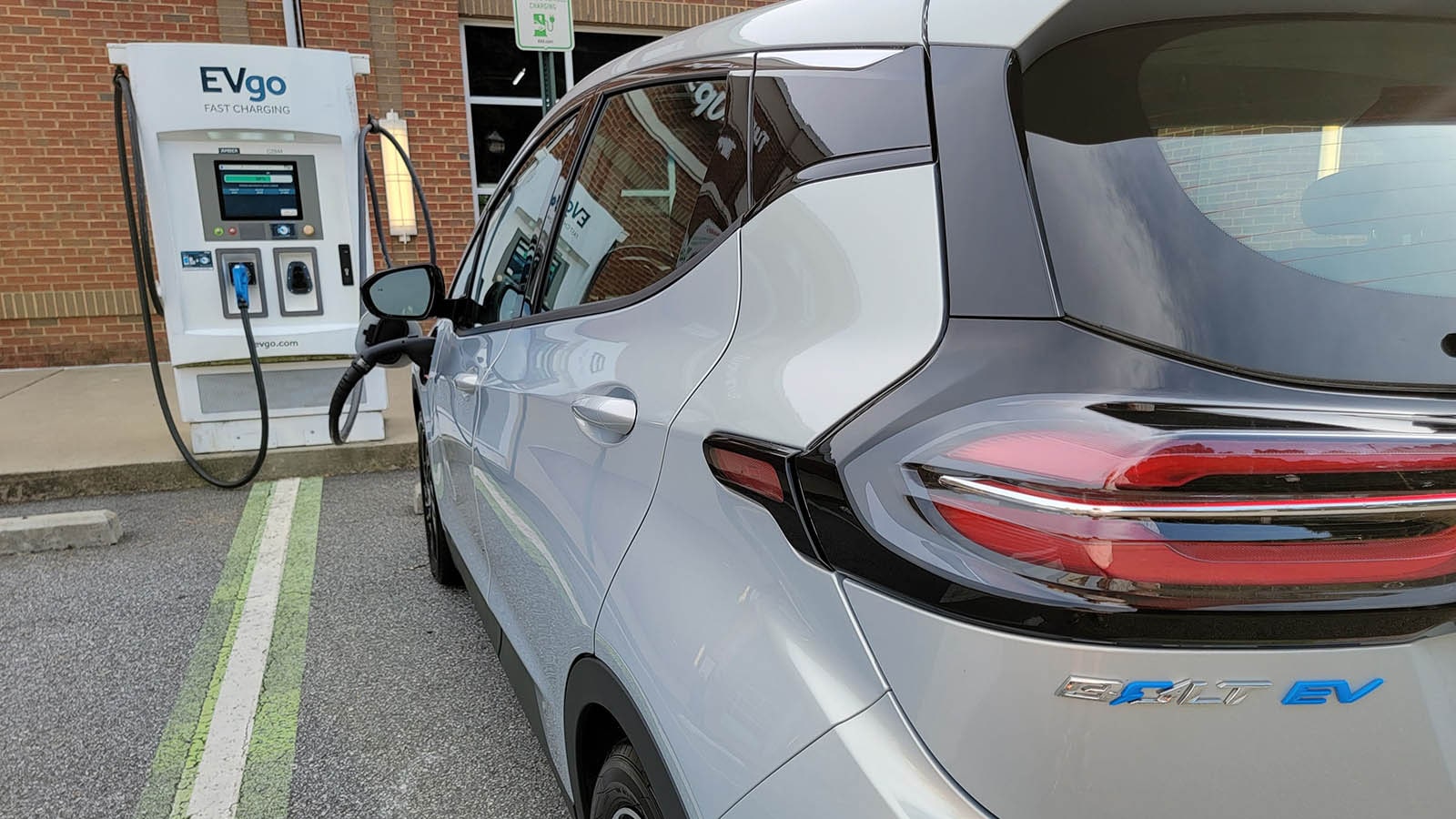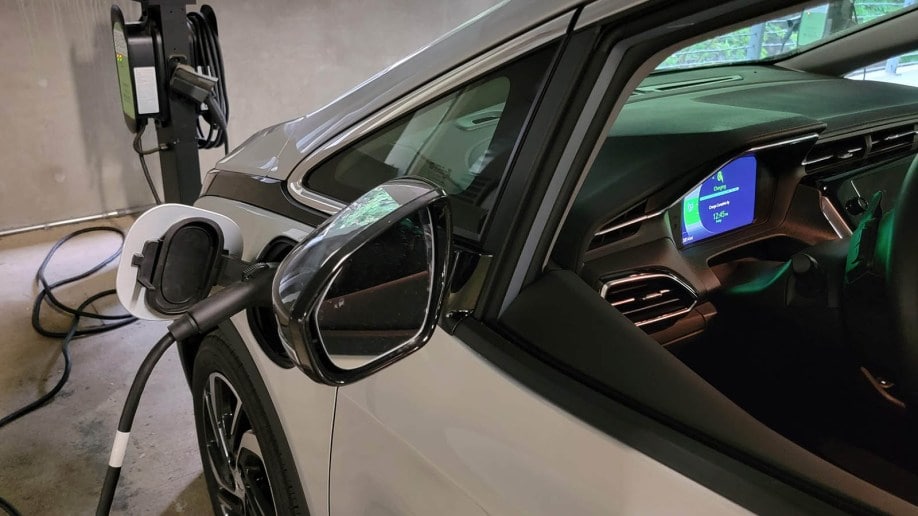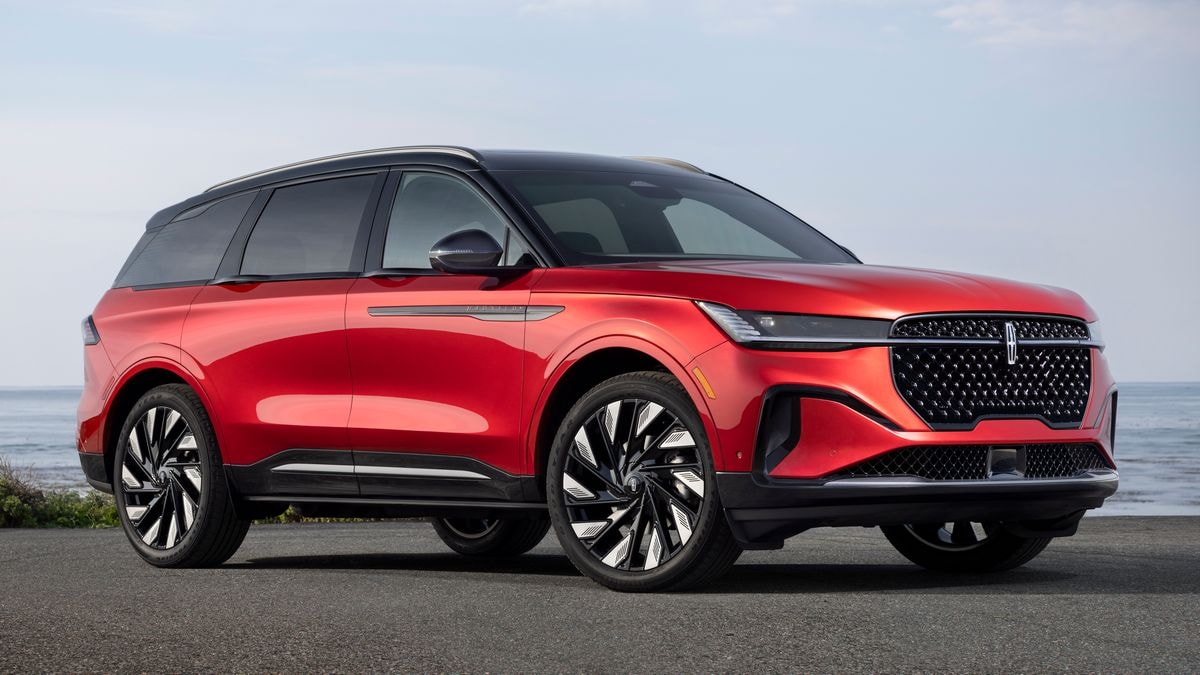Quick Facts About Charging a Chevy Bolt
- The Chevy Bolt can handle all three EV charging levels, from the slowest Level 1 to the DC fast charging of Level 3.
- The most convenient way and place for most owners to charge a Bolt is using a Level 2 charger at home.
- The Bolt’s onboard navigation system can locate nearby public charging stations. The Chevy app can help map out charging stations if you’re planning a road trip.
When it comes to electric cars, the Chevrolet Bolt might be one of the best values on the EV market today. Mainly the used car market, however, because Chevy discontinued this affordable electric car in December 2023, and dealer inventory of new models is decreasing. A new Bolt EV starts at $27,495, including the destination charge, and you may be eligible for a federal income tax credit of up to $7,500, which can be applied toward the purchase price when you buy one. With its respectable battery range compared to the competition, it’s a great daily driver or commuting EV. We’ll tell you about charging this subcompact EV.
Chevy Bolt Charging Times
- Level 1 – Adds about 4 miles of range per hour.
- Level 2 – Adds about 39 miles of range per hour.
- Level 3 – Adds up to 100 miles of range in 30 minutes.
How To Charge a Chevy Bolt
Charging your Chevy Bolt is a straightforward process. The same rules for charging apply, whether it’s a Level 1, Level 2, or Level 3 charger. The equipment may look different, but the process of using each charger is the same.
At-Home Charging
The most convenient place to charge your Bolt is at home. You can do this in two ways: with a basic Level 1 charging cable or an installed Level 2 charger.
The Level 1 charger is easy to use, especially if it’s your first time charging an EV. Bolt models come standard with the Level 1 charging cord, and setting up this charger may seem familiar. All you need is access to any 3-prong, 110-volt household alternating current (AC) outlet for this option. Plug the charging cable into a wall outlet, then insert the J1772 connector on the other end into the Bolt’s charging port. While it’s easy to set up and use your Level 1 charger, it’s also the slowest type of charging. Chevrolet recommends this option for “topping off” your vehicle overnight.
The second at-home option is using a Level 2 wall charger. These chargers require installation on a dedicated 240-volt circuit by a qualified electrician. After installation, using a Level 2 wall charger is similar to plugging in with a Level 1 charging cord. It’s the best option for recharging after daily driving or charging to capacity before a longer trip.
Chevrolet also has a dual-level charging cord, which is technically a Level 2 charger that does not require wall installation. The charge cord is compatible with 120- and 240-volt outlets, making it portable. This option adds about 25 miles of range per hour of charging. Chevy recommends this for your everyday charging needs.
Public Charging
The fastest way to charge your Bolt is to plug it into a Level 3 charger for a dose of direct current (DC) to its battery. These charging stations, called DC fast chargers, are located primarily in urban areas and locations near interstate highway exits. They are not available for home installation. Chevy Bolt owners can also connect to Tesla Superchargers using an adapter. However, only select stations are or soon will be available. Using DC fast chargers costs more than other types because it’s quicker to replenish the battery’s energy. Using DC fast chargers is the quickest way to replenish a car’s battery quickly when away from home. The plug the Bolt uses for Level 3 charging is called a CCS Combo connector.
There are nearly 10,000 DC fast charging stations in the United States, often with multiple chargers. For comparison, there are more than 62,000 Level 2 chargers in public locations, such as shopping centers, parking garages, and hotels. In addition, there are semi-public chargers in apartment complexes for residents and at workplaces for employees to use.
Plug in your Bolt at a public station and initialize charging. The cost of charging the EV is applied to your charger network account when the session is complete.
MORE: Are Electric Cars Low-Maintenance?
Where To Charge a Chevy Bolt
As with other EVs, you can charge the Chevrolet Bolt at home or public charging stations equipped with either a J1227 connector for Level 1 and Level 2 charging or a CCS Combo connector for DC fast charging. Typically, most EV owners charge their electric cars at home. Still, finding a public charger in most regions isn’t difficult but can be a challenge in rural locations or states. The Bolt’s onboard navigation system can locate nearby stations. If you’re planning a road trip, the myChevrolet mobile app can help map out charging stations along your route.
Do I Get Free Charging for the Chevrolet Bolt?
One of the perks of buying a Bolt is charging station discounts. Chevrolet and charging network EVgo have a partnership to bring drivers savings. Eligible Bolt owners receive a $500 credit at EVgo stations for fast charging when out and about. Also, Chevrolet will cover the standard installation of a Level 2 at-home charger for eligible customers who buy or lease a 2023 Bolt EV.
How Long Does It Take to Charge a Chevy Bolt?
Chevy says Bolt drivers can add 15 to 100 miles in 30 minutes using a DC fast charger. Charging the vehicle fully could take more than an hour at that speed.
At a Level 2 charger, adding seven to 40 miles to the Bolt takes one hour. In other words, it takes an estimated 7 hours to replenish the battery completely using a Level 2 charger.
It would take more than 64 hours to recharge when plugged into a standard household outlet. Keep in mind, most people only drive an average of 37 miles per day and can recharge at home regularly and be fully charged and ready to go when needed.





